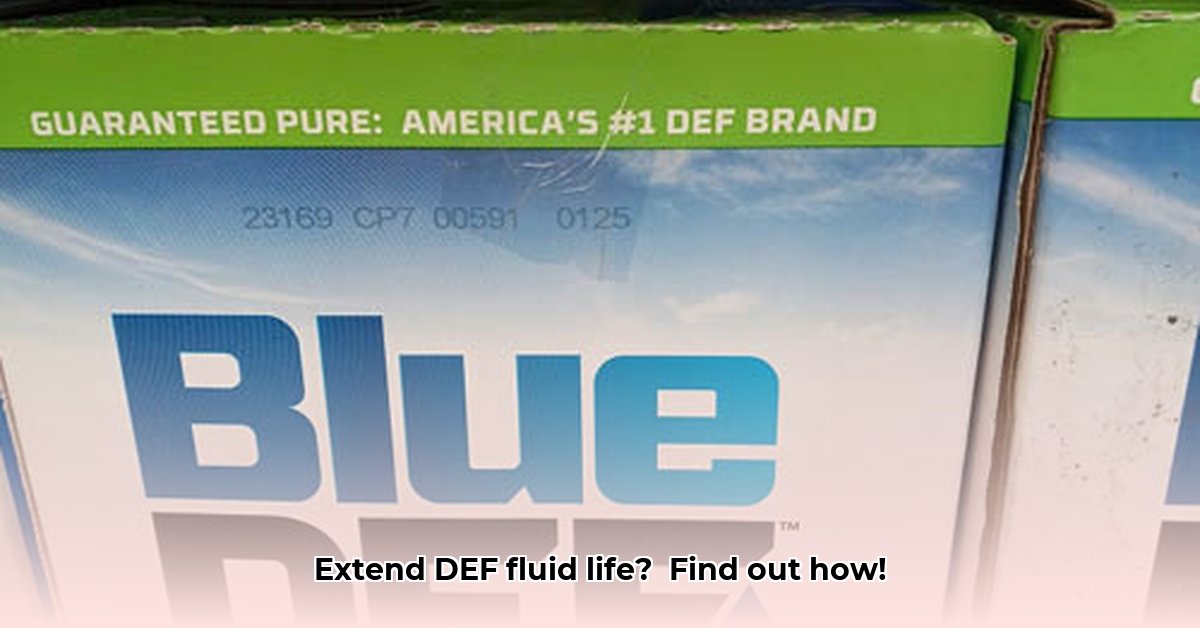
Understanding Diesel Exhaust Fluid (DEF) Shelf Life
Diesel Exhaust Fluid (DEF) is crucial for diesel vehicle emissions compliance, but its shelf life isn't indefinite. Understanding how to store and handle DEF properly is vital for both vehicle performance and cost-effectiveness. This guide provides actionable steps to extend DEF's life and avoid costly mistakes.
How Long Does DEF Last?
The lifespan of DEF depends significantly on storage conditions. Extreme heat is its biggest enemy, accelerating its degradation. While freezing may temporarily crystallize the fluid, it usually returns to normal upon thawing. Many manufacturers recommend storing DEF below 86°F (30°C). However, there's no universal expiration date standard; manufacturers use varying labeling systems.
Decoding DEF Date Codes
Unfortunately, consistent date coding is lacking across all DEF manufacturers. Each brand might employ unique labeling, including dates, batch numbers, or complex codes. Always consult your specific DEF container's labeling and the manufacturer's instructions or website for clarification. If decoding remains challenging, contact the manufacturer directly.
Extending DEF's Life: Step-by-Step Guide
To maximize your DEF's lifespan, follow these simple yet effective steps:
Optimal Storage Location: Choose a cool, dark, and dry location, such as a pantry or basement shelf, away from direct sunlight and temperature fluctuations.
Maintain a Sealed Container: Always use the original, sealed container. Refilling old containers risks contamination, significantly impacting DEF quality.
Environmental Protection: Shield DEF from dust, moisture, and other contaminants. Properly sealed containers minimize exposure to the elements.
Regular Date Code Checks: Periodically check the date code or equivalent indicator on the container to monitor the DEF's remaining shelf life.
Strategic Purchasing: Consider your usage patterns. Smaller containers are more convenient for occasional users, minimizing waste, while bulk purchases might be more economical for high-volume users with proper storage facilities. However, even with bulk, a "first in, first out" approach is recommended.
DEF Storage and Cost Comparison
| Quantity | Price Range (USD) | Storage Considerations | Estimated Shelf Life (Months) | Notes |
|---|---|---|---|---|
| 2.5-gallon jug | $10 - $15 | Easy to store in a cool, dark place. | 12-24 (temp dependent) | Ideal for occasional users. |
| 5-gallon pail | $20 - $30 | Requires more dedicated storage space; Keep cool and dry. | 18-30 (temp dependent) | Suitable for moderate usage. |
| 275-gallon tote | $600 - $800+ | Needs a temperature-stable, protected storage solution. | 18-36+ (temp dependent) | Best for large-scale users with proper storage. |
The Importance of Proper DEF Storage
"Neglecting proper DEF storage can lead to significant issues," explains Dr. Anya Sharma, Chemical Engineer at the National Institute of Standards and Technology. "Degraded DEF can damage your vehicle's emissions system, resulting in expensive repairs and potential regulatory non-compliance."
Key Takeaways: Maximizing DEF Lifespan
- Temperature is Key: Maintaining a consistent temperature around 75°F (24°C) is crucial for preventing degradation.
- Protect from Light and Air: Keep DEF in its original, sealed container, away from direct sunlight and air exposure.
- Consider Your Usage: Buy in bulk only if you have the storage capacity and usage frequency to avoid waste. Smaller containers are a more practical solution for users who consume DEF infrequently.
- Regular Inspection: Periodically check DEF for discoloration or unusual odors—these are telltale signs of degradation.
Long-Term DEF Storage Strategies
For extending DEF shelf life beyond a year, consider investing in higher-quality DEF formulations with enhanced stability and practicing a "first-in, first-out" inventory rotation system if purchasing in bulk. This ensures that the oldest DEF is used first, minimizing the risk of expiration. Remember, proactive measures today can prevent significant costs and vehicle issues tomorrow.